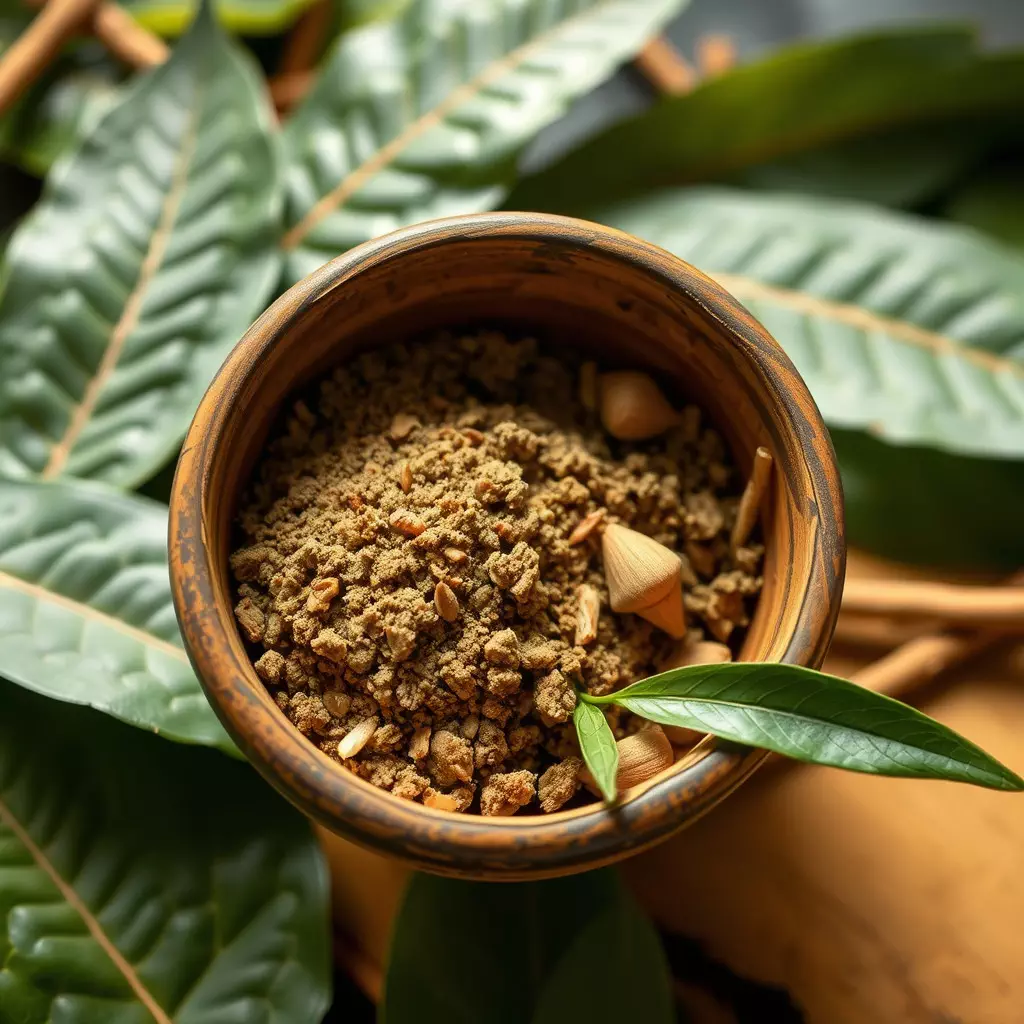Kratom, scientifically known as Mitragyna speciosa, is a natural substance derived from the leaves of a tropical evergreen tree native to Southeast Asia, gaining attention as an alternative for managing chronic pain. Its active compounds, mitragynine and 7-hydroxymitragynine, may offer analgesic effects by interacting with opioid receptors in the brain without the same addiction risks as traditional opioids. While it holds promise for conditions like fibromyalgia, arthritis, and neuropathy due to its binding action with mu-opioid receptors, kratom's effectiveness varies among individuals, influenced by personal metabolism, tolerance, and strain differences. The use of kratom for pain management is contentious; it has been both praised for reducing reliance on prescription opioids and criticized due to potential side effects and risks of psychological dependency. Its complex legal status adds another layer of consideration. As such, healthcare professionals advise caution, emphasizing the need for further scientific research to fully understand kratom's benefits and challenges in chronic pain management. Individuals considering kratom should seek professional medical advice to make informed decisions about its use.
Kratom, a botanical extract from the Mitragyna speciosa tree, has garnered attention as a potential alternative for managing chronic pain, potentially mitigating the reliance on prescription painkillers. This article delves into the mechanisms behind kratom’s analgesic properties, offering insight into its role in pain management. By exploring the science underpinning its effects and discussing the delicate balance between its benefits and potential risks, readers can better understand how kratom might serve as a viable option for those seeking relief from persistent pain conditions. Join us as we navigate the complexities of kratom’s therapeutic potential in this context.
- Understanding Kratom's Role in Chronic Pain Management
- The Science Behind Kratom's Analgesic Effects
- Balancing Benefits and Risks: Kratom as an Alternative to Prescription Painkillers
Understanding Kratom's Role in Chronic Pain Management

Mitragyna speciosa, commonly known as kratom, has garnered attention in the realm of chronic pain management due to its potential effects on pain relief. Kratom, derived from the leaves of a tropical tree native to Southeast Asia, contains alkaloids that may interact with opioid receptors in the brain, offering analgesic properties. For individuals suffering from chronic pain, kratom can serve as an alternative or adjunct to traditional pharmaceuticals, which often come with a host of side effects and the risk of dependency. The mitragynine and 7-hydroxymitragynine found in kratom are thought to play significant roles in its analgesic effects, providing relief for those who experience persistent pain from conditions such as fibromyalgia, arthritis, or nerve damage.
The use of kratom in managing chronic pain is a subject of ongoing research and debate. Its efficacy varies among individuals due to differences in metabolism, tolerance, and the specific strain of kratom used. While some patients report significant relief from their symptoms without the side effects associated with prescription opioids, others may not find it as effective. It’s important for those considering kratom as a part of their pain management strategy to consult with healthcare professionals, especially given the complex legal status and potential interactions with other medications. As such, kratom’s role in chronic pain management is an area that warrants careful consideration and further scientific investigation to fully understand its benefits and limitations.
The Science Behind Kratom's Analgesic Effects

Kratom, a tropical evergreen tree native to Southeast Asia, has been the subject of increasing interest within the realm of natural pain management, particularly for those suffering from chronic pain. The leaves of kratom contain compounds known as alkaloids, specifically mitragynine and 7-hydroxymitragynine, which are believed to be responsible for its analgesic effects. When ingested, these alkaloids interact with the brain’s opioid receptors, mimicking the effects of traditional opioids but without the same level of sedation or euphoria. This selective interaction can provide pain relief without the high risk of addiction and overdose associated with prescription opioids.
Research has indicated that kratom may offer a therapeutic option for managing chronic pain. Its alkaloids bind to mu-opioid receptors, which play a crucial role in pain perception and modulation. This binding action can lead to a reduction in pain signals sent to the brain, thereby offering relief for individuals with chronic conditions such as fibromyalgia, arthritis, and neuropathic pain. Clinical studies and anecdotal evidence suggest that kratom could be a valuable component of a comprehensive pain management strategy, offering a natural alternative for those seeking to reduce their reliance on prescription painkillers. However, it is imperative for individuals considering kratom as part of their pain management plan to consult with healthcare professionals, given the complexity and individual nature of chronic pain conditions.
Balancing Benefits and Risks: Kratom as an Alternative to Prescription Painkillers

Kratom, a plant from Southeast Asia with the botanical name Mitragyna speciosa, has garnered attention as a potential alternative for managing chronic pain, potentially reducing reliance on prescription painkillers. Proponents of kratom highlight its ability to alleviate various types of persistent pain, which is a common concern among individuals who have exhausted conventional treatment options with mixed success. The active compounds in kratom, mitragynine and 7-hydroxymitragynine, interact with the opioid receptors in the brain, providing analgesic effects without the need for strong opioids that often come with a high risk of dependency and side effects. However, the benefits of kratom use must be weighed against potential risks. Regulatory bodies have expressed concerns about its safety, as kratom can cause adverse effects such as nausea, constipation, and psychological dependency. Furthermore, its efficacy and long-term impact on health are still subjects of ongoing research. As such, individuals considering kratom for chronic pain management should approach it with caution, ideally under the guidance of a healthcare provider who can help balance the benefits against the risks and monitor for any negative outcomes.
Kratom has emerged as a potential alternative for individuals managing chronic pain, offering a natural path that could potentially reduce reliance on prescription painkillers. The scientific findings indicate that kratom’s analgesic properties stem from its interaction with the body’s opioid receptors, providing relief without the addictive potential of conventional medications. While it is crucial to weigh the benefits and risks associated with kratom use, this herbal supplement may present a valuable option for those in search of chronic pain management. As research continues to evolve, understanding kratom’s role through scientific scrutiny will be key to determining its place in medicine.






